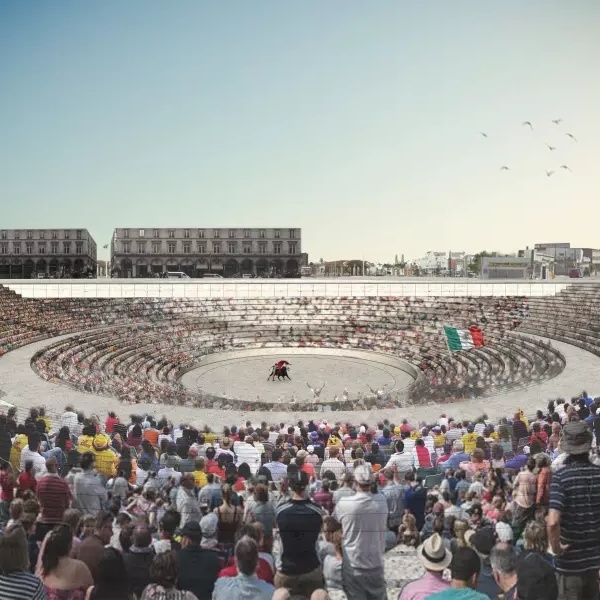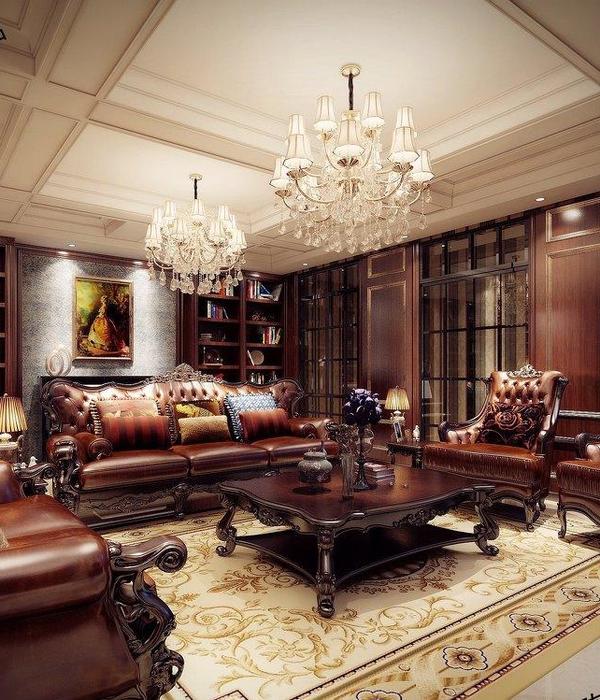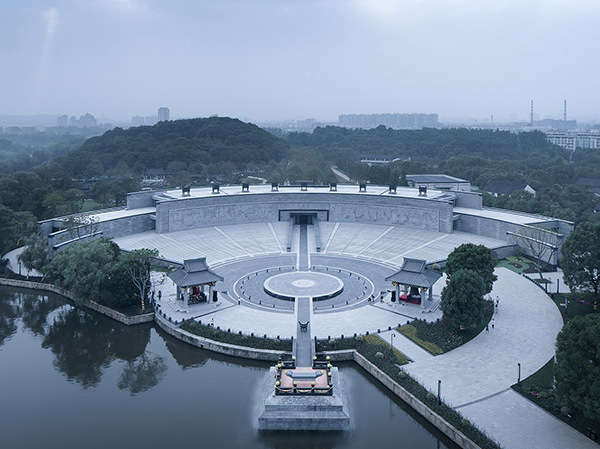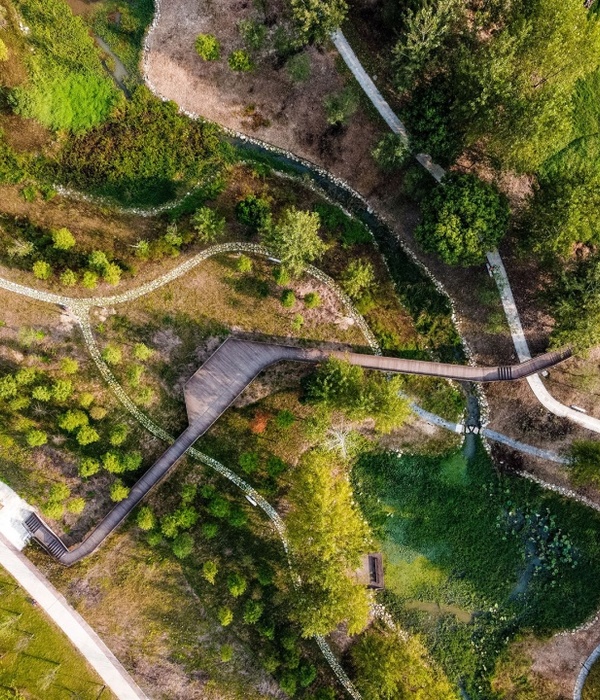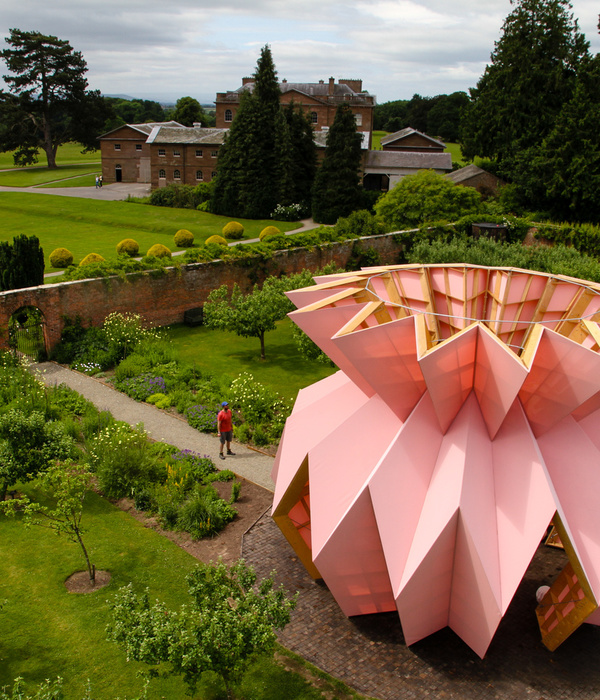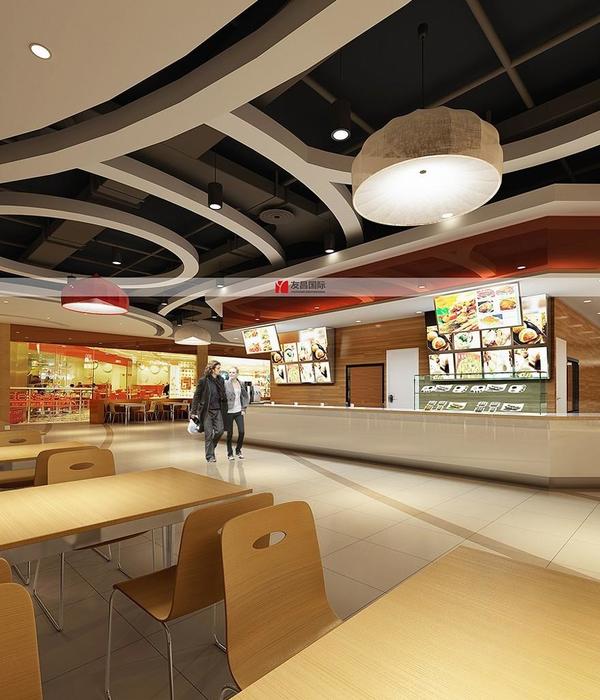The Freedom Park
设计方:GREENinc as part of NBGM (Newtown Landscape Architects & GREENinc Landscape Architecture & Gallery Momo Joint Venture)
位置:南非
分类:公园
内容:实景照片
委托人:The Freedom Park Trust
图片来源:GREENinc
图片:20张
自由公园位于南非首都茨瓦内郊区,位于比利陀利亚附近。如果从天空俯瞰,自由公园呈环形位于远离城市的树林之间,但距离市中心不远。
自由公园是在南非种族隔离暴动后,由总统纳尔逊·曼德拉授权的一个真相和解委员会项目。公园有四个远景想象:和解、国民建筑、人民自由和人道主义色彩。同时通过周围园林景观的规划和实施,加强其对这些远景的精神面貌和政治色彩。
它可以说是一个回忆性的历史文化公园,可以整个的追溯南非争取自由的奋斗史。公园位于比勒陀利亚的Salvokop,园中种植有很多的植被和树木,是一个种类繁多的生物观赏园。经过不断修复和建设,园内有很多的园林风景概念区域。在自由公园里有许多为了装饰公园而种植的树木以及花卉等,包括绿油油的草地,一排一排的花卉,还有一些热带植物,像椰子树等。
公园内还有很多公共广场以及水上喷泉区域,有时还可以看到很多南非特色的表演。通过这种园林景观建设,把南非的特色文化、传统以及一些精神象征传达出来。自由公园有几个标志,包括由11块大石头围绕成的墓园、人名墙、圆形剧场、不熄火焰、领导者走廊、避难所等,在剧场里,游客可以看当地特色表演。除此之外,在公园里还有展示厅,祈祷场所等。这些都对游客开放。自由公园不像其他公园那么热闹,因为在那里,热闹与周围的氛围不和,南非旅游的游客需怀着崇敬的心情进入。
译者: 饭团小组
hapo is the Khoi word for dream. It is the name given to the newly opened museum at the prestigious Freedom Park in Tshwane, South Africa, designed by GREENinc + Newtown Landscape Architects together with Office of Collaborative Architects (OCA). The brief for the buildings and their landscape setting is rather complicated in its context but revolves around the idea of the Khoi proverb:hapo tama /haohasib dis tamas ka i bo; translated to English as A dream is not a dream until it is a dream of the community. The park is a place of ‘gardens’ within the ‘garden’ of the Salvokop hill and, in turn, within the vast garden that South Africa is. Rather than a conventional monument of victory or victimhood, it encapsulates a vision which seeks to embrace all the people of South Africa in a project aimed at asserting and giving expression to an intensely felt need throughout the country to restore and amplify the long-denied African voice.
hapo is the first point of arrival for the visitor to Freedom Park. It is here that the visitor begins their walk along the Vhuwaelo, a contemplative journey which spirals up the Salvokop hill, stringing together ‘garden’ spaces like beads on a necklace. hapo is the first of these ‘gardens’, a landscape originally conceived as boulders and metamorphosed layers of rock that talk to the creation story.
Moving eastwards the visitor encounters the first of three core external spaces in //Hapo – the Garden of Indigenous Knowledge or the Healing Garden. An articulated channel of water leads the visitor into this quiet, contemplative space which gazes eastwards over the city towards the Union Buildings and a propitious future. As water and pathway merge, the visitor is encouraged to dwell and explore this simple space cut into the earth and engage with a rich tapestry of medicinal plants. Indigenous knowledge is an all-pervading aspect of Africa. Accordingly the use of medicinal plants in the garden and on Salvokop is extensive and selection and location of species to plant was guided by traditional healers who have extensive knowledge in this area.
The second of the core spaces, Sentlhaga (or children’s garden), is held tightly between the Healing Garden and ‘Boulders’. A series of cascading walls and terraces provide refuge for both plants and the child’s imagination. Totems, animated water, open lawns and hidden pathways provide space for children to engage with the landscape and each other. A small grassed amphitheatre and rubberised surfaces provide further opportunity for caretakers and guides to convey concepts dealt with in the museum to the children (loose props will be used to assist with storytelling – a traditional way of communicating in Africa).
As the visitor leaves the Healing Garden, s/he makes a 180° turn and heads back in a westerly direction towards the Boulders and the museum entrance. In this way, the visitor is not forced into a building upon entering the site but is allowed to first absorb and appreciate their context as they move slowly through the landscape, thus emphasising the ‘garden’ rather than the building as an important theme in the visitors experience.
Because the museum was conceived as a series of epochs which should be interconnected, the Boulders needed to be clustered in a circular arrangement to provide for cross circulation between exhibits and story-telling spaces. This provided the opportunity for a Central Courtyard space, the third of the core external spaces, and the literal heart of hapo. The space itself is simple – a uniform surface punctuated by mounds of abundant Savannah vegetation taking refuge in the protection of the Boulders. This simple resolution not only provides clear access lines to openings in each of the boulders, and the exhibits that lie within, but also establishes small and large spaces in and around the mounds where storytelling, dancing, gathering, and temporary exhibit can take place. The plants located in the ‘cracks between the boulders’ also make reference to the first plants that started growing on earth as life evolved.
Because, both conceptually and programmatically, the spaces and places that make up the landscape of //hapo are considered as extensions of the Boulders (and museum), the appropriate selection of materials was critical. To this end, the red clay brick was selected as it opened up the possibilities for treating vertical and horizontal planes in a uniform manner, connecting the immediate landscape to the copper of the Boulders and the red soils of the hill. Rusted steel, timber, raw concrete finishes and low level lighting compliment and accentuate this palette, furthering the effects of the metaphor. Circulation routes, gathering spaces (covered and open-to-air), viewpoints and thresholds are cut into this ‘clay-like’ base, creating a series of ramps, terraces and enclaves, and in turn providing opportunity, in the cracks and crevices, for the vegetation of the hill to take root. And as this indigenous savannah vegetation of the north facing slopes moves down the hill, embracing //hapo, the Boulders, over the course of time, slowly, become one with the garden.
Exiting the museum at any one of the openings which break out onto various terraces and courtyards, the visitor may choose to take one of the many pathways that re-join the Vhuwaelo and continue their journey up the hill. As the pathway leaves //hapo to the east it leaves the ground itself in order to deal with the complexities of navigating a steep slope and to afford lovely vantage points of //hapo, Salvokop and the city.
It is at the intersection of pathways, ideas and complexities that opportunities, and design opportunities in particular, are most often found. As South African landscape architecture continues to engage and confront people about their perceptions of landscape and their place within it, the challenge remains to create exceptional spaces for people to inhabit, identify with and assign to value and meaning.
At the threshold between city and park, the ‘gardens’ of //hapo find themselves at such an intersection on so many levels – ecological contrasts, economical differences, cultural richness and symbolism, intellectual debate and historical narrative.
In seeking to provide visitors with a real opportunity to find meaning in landscape, the designers pushed to move beyond simply naming arbitrarily placed objects in a landscape that are on some level hoped to be culturally relevant or accessible. Rather, by allowing the complexities of the site and the brief to guide the design, the process became an unfolding of the land to find its sedimentation and open up new possibilities to understanding and experiencing its hidden values. Through tracing its contours and cutting and moulding the landscape in a process much like carving a sculpture, new patterns gave rise to complex and contextually unique forms and spaces. Place making became a process of making these spaces comfortable, providing protection from the elements, providing opportunity for resting, moving, connection, gathering, playing, exploring, gazing, reflection, learning, etc. Ultimately, meaning and subsequent narrative becomes the product of interaction between person and person, people and landscape. Thought and emotional response are provoked through the unlayering of the richness of the landscape.
神秘的南非自由公园外部局部图
神秘的南非自由公园外部细节图
神秘的南非自由公园
神秘的南非自由公园图解
{{item.text_origin}}

